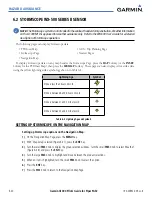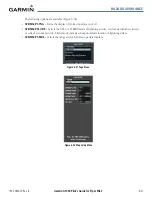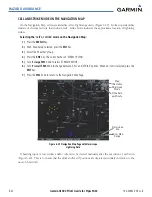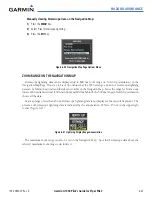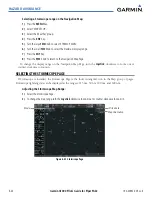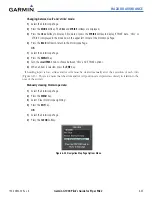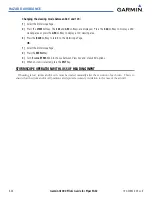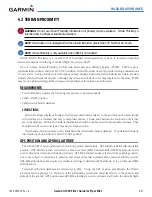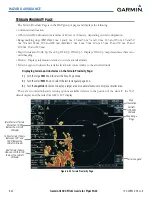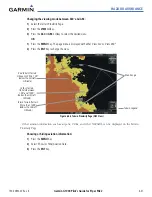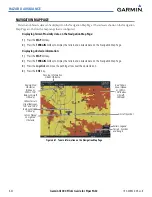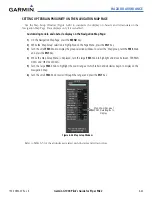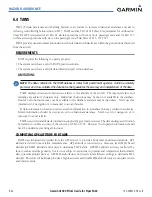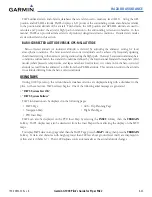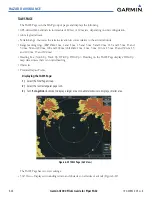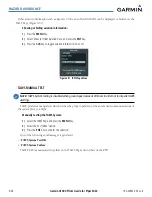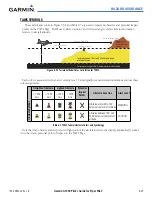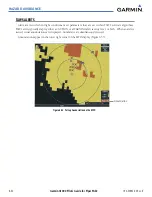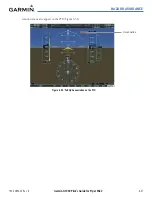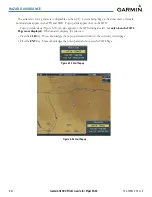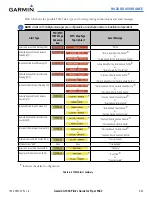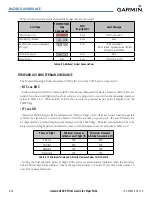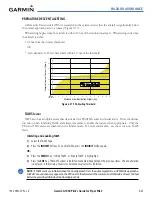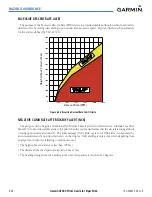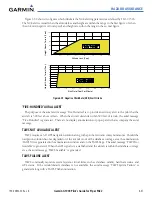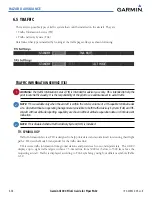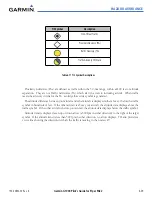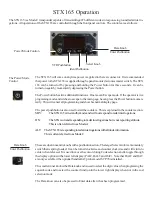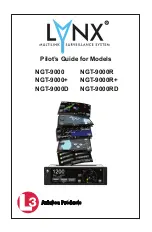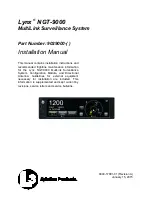
Garmin G1000 Pilot’s Guide for Piper PA32
190-00692-00 Rev. B
6-44
HAZARD AVOIDANCE
6.4 TAWS
TAWS (Terrain Awareness and Warning System) is an feature to increase situational awareness and aid in
reducing controlled flight into terrain (CFIT). TAWS satisfies TSO-C151b Class B requirements for certification.
Class B TAWS is required for all Part 91 aircraft operations with six or more passenger seats and for Part 135
turbine aircraft operations with six to nine passenger seats (FAR Parts 91.223, 135.154).
TAWS provides visual and aural annunciations when terrain and obstacles are within the given altitude threshold
from the aircraft.
REQUIREMENTS
TAWS requires the following to operate properly:
• The system must have a valid 3-D GPS position solution.
• The system must have a valid terrain/obstacle/airport terrain database.
LIMITATIONS
NOTE:
The data contained in the TAWS databases comes from government agencies. Garmin accurately
processes and cross-validates the data but cannot guarantee the accuracy and completeness of the data.
TAWS displays terrain and obstructions relative to the altitude of the aircraft. The displayed alerts and
warnings are advisory in nature only. Individual obstructions may be shown if available in the database.
However, all obstructions may not be available in the database and data may be inaccurate. Never use this
information for navigation or to maneuver to avoid obstacles.
Terrain information is based on terrain elevation information in a database that may contain inaccuracies.
Terrain information should be used as an aid to situational awareness. Never use it for navigation or to
maneuver to avoid terrain.
TAWS uses terrain and obstacle information supplied by government sources. The data undergoes verification
by Garmin to confirm accuracy of the content, per TSO-C151b. However, the displayed information should
never be understood as being all-inclusive.
COMPUTING GPS ALTITUDE FOR TAWS
TAWS uses information provided from the GPS receiver to provide a horizontal position and altitude. GPS
altitude is derived from satellite measurements. GPS altitude is converted to a mean sea level (MSL)-based
altitude (GPS-MSL altitude) and is used to determine TAWS alerts. GPS-MSL altitude accuracy is affected by
factors such as satellite geometry, but it is not subject to variations in pressure and temperature that normally
affect pressure altitude devices. GPS-MSL altitude does not require local altimeter settings to determine MSL
altitude. Therefore, GPS altitude provides a highly accurate and reliable MSL altitude source to calculate terrain
and obstacle alerts.
Summary of Contents for G1000:Piper
Page 1: ...Piper PA32...
Page 50: ...190 00692 00 Rev B Garmin G1000 Pilot s Guide for Piper PA32 1 40 SYSTEM OVERVIEW BLANK PAGE...
Page 438: ...190 00692 00 Rev B Garmin G1000 Pilot s Guide for Piper PA32 D 6 APPENDIX D BLANK PAGE...
Page 444: ...190 00692 00 Rev B Garmin G1000 Pilot s Guide for Piper PA32 F 4 APPENDIX F BLANK PAGE...
Page 450: ...Garmin G1000 Pilot s Guide for Piper PA32 190 00692 00 Rev B I 6 INDEX BLANK PAGE...

